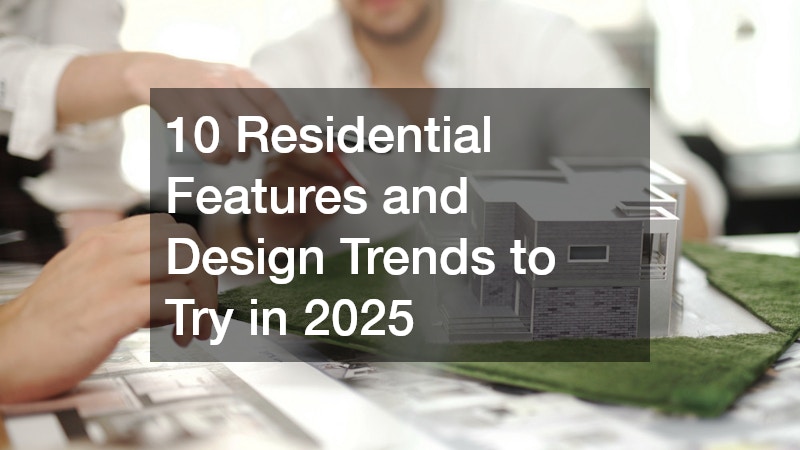As we approach 2025, the landscape of residential living is poised for a significant transformation. With advancements in technology, shifts in lifestyle preferences, and a heightened focus on sustainability, the residential features and design trends of the future are set to revolutionize our living spaces. These trends emphasize not only aesthetic enhancements but also improved functionality, sustainability, and health. Homeowners and builders alike are tasked with the exciting challenge of integrating these elements into traditional and contemporary residential designs.
The importance of being aware and prepared for these emerging trends cannot be overstated. Embracing innovations such as smart technologies and wellness in interior design offers homeowners the opportunity to create spaces that cater to modern needs, ensuring efficiency and enhancing quality of life. Moreover, as environmental consciousness continues to rise, sustainable residential elements are becoming vital to new designs, helping to minimize ecological footprints while maximizing comfort. By paying attention to these evolving trends, homeowners can ensure their homes remain relevant and valuable in the years to come.
Key Sustainability Features
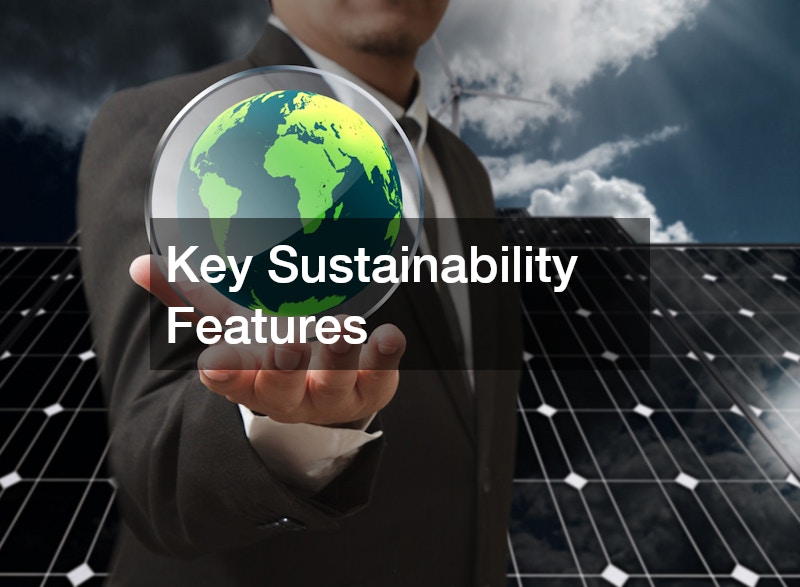
One of the foremost trends in residential features for 2025 is sustainability. As resources become scarcer and environmental issues more pressing, sustainable living is no longer a choice but a necessity. Key features include solar panels, energy-efficient appliances, and green roofs, which contribute to reducing energy consumption and promoting eco-friendliness. Partnering with a local garage door company that offers sustainable options can enhance this aspect by ensuring that every part of the home aligns with eco-friendly practices.
These features not only benefit the environment but also offer significant financial savings over time. Homeowners can capitalize on governmental incentives and rebates for installing energy-efficient systems, which also add value to their properties. As technology advances, these sustainable residential elements become increasingly accessible and affordable, encouraging widespread adoption among new homeowners and those undergoing professional home remodeling.
Furthermore, embracing sustainability in residential features supports the shift towards self-sufficiency. By integrating water conservation systems and utilizing local, sustainable materials, homes can reduce their reliance on external resources. This trend resonates with the growing consumer desire to lead more responsible lifestyles and supports a greener future for upcoming generations.
Smart Technologies
As technology continues to advance at an unprecedented pace, smart technologies have emerged as a pivotal aspect of modern residential features. From voice-activated assistants to smart thermostats and automated lighting, these technologies enable homeowners to control various aspects of their homes with ease. Integrating smart technologies into electrical services, such as smart circuit breakers and automated energy management systems, can lead to improved efficiency and energy savings.
Beyond convenience, smart residential features contribute significantly to safety and security. Homeowners can opt for smart locks that pair with locksmith services, offering robust security solutions accessible through smartphone apps. Moreover, smart surveillance systems provide real-time monitoring and alerts, allowing residents to maintain peace of mind whether they are home or away.
By 2025, we can expect these technologies to become even more refined and integrated into the home environment. As adoption increases, the cost of smart systems will likely decrease, making them accessible to a broader audience. The future will see homes becoming increasingly interconnected, creating a seamless living experience that caters to the demands of the digital age.
Innovative Landscaping Designs
Outdoor spaces are becoming as important as indoor areas in the design of modern residences. Innovative landscaping designs offer options that are as beautiful as they are functional, integrating nature into daily life. Residential elements such as vertical gardens, native plant installations, and water-efficient irrigation systems are setting new standards in landscape design. Engaging a professional fence contractor can enhance this integration by establishing seamless transitions between outdoor and indoor spaces.
Emphasizing the relationship between the built environment and nature not only enhances visual aesthetics but also improves the quality of life for occupants. Green spaces can reduce stress, increase comfort, and provide opportunities for relaxation and recreation right at home. By creating sustainable landscapes, homeowners contribute to biodiversity conservation and air purification, promoting healthier communities.
The trend in landscaping design also focuses on functional elements that blend with aesthetic beauty. Incorporating spaces for outdoor dining, living areas, and ecological sustainability elements ensures that every part of the property is utilized efficiently. As a result, these residential features leverage the full potential of outdoor spaces, making them indispensable in modern home design.
Wellness Features in Interior Design
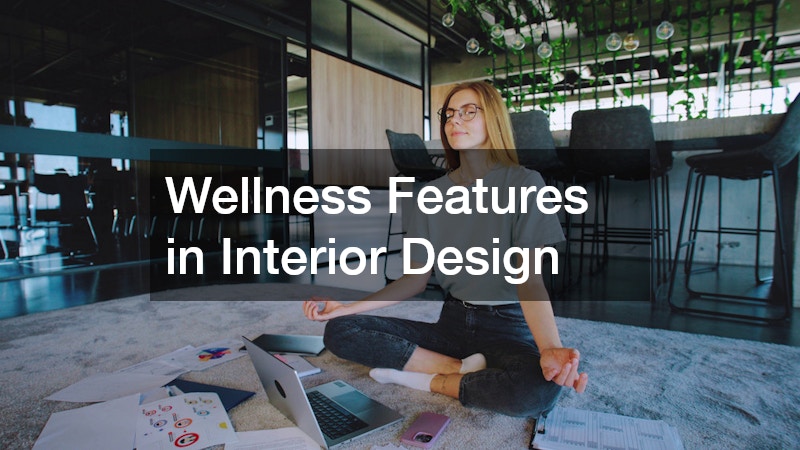
Turning inward, wellness-centric interior design is a trend that has captured the attention of both designers and homeowners alike. These residential features prioritize the health and well-being of the occupants by ensuring that homes are more aligned with natural biological rhythms. Creating spaces with natural light, improved ventilation, and noise-reducing materials is becoming essential. Collaborating with a reputable windows company can ensure maximum light entry and optimal ventilation, crucial for fostering a healthy living environment.
Another wellness-oriented trend is the use of non-toxic materials to reduce harmful emissions in homes. Thoughtful choices of paint, flooring, and furnishings help improve indoor air quality and contribute to a healthier living space. In addition, incorporating biophilic design principles—such as the use of natural materials and plant life—creates a calming atmosphere that nurtures the senses and promotes overall well-being.
This holistic approach amplifies the connectivity between humans and their environment, emphasizing the importance of a balanced lifestyle. By 2025, wellness features in interior design are poised to become an integral part of every home, underscoring the relationship between the built environment and personal health. These trends are inviting homeowners to create sanctuaries that nurture both body and mind.
Innovative Storage Solutions
Maximizing space through innovative storage solutions is a critical component of modern residential features. As living spaces become more compact, efficient use of available square footage is essential. Homeowners are increasingly turning to custom closet designs, modular shelving, and built-in furniture to keep their spaces organized and clutter-free. Professional home remodeling services can assist in planning and executing these high-quality storage enhancements.
Creative storage solutions are designed to seamlessly blend with the home’s aesthetic, ensuring that they are not only functional but also visually appealing. Hidden compartments, under-stair storage, and multi-purpose furniture are just a few examples of how creativity can transform even the most limited spaces. These solutions cater to the modern homeowner’s need for space efficiency without compromising style.
By 2025, it is anticipated that storage solutions will continue to evolve to meet changing lifestyles and demands. As people prioritize minimalism and organization in their homes, these innovative residential features will be indispensable. They not only contribute to a more organized home environment but also support sustainable living by promoting thoughtful consumption and efficient use of space.
Personalization in Residential Design
Personalization in residential design is another trend gaining momentum. The desire for unique, custom spaces has led homeowners to seek out ways to infuse their personalities into their living environments. From designing custom-built furniture to selecting personalized color palettes, every detail can be tailored to reflect individual tastes. Siding companies often offer a variety of siding options that allow homeowners to select the materials and colors that best suit their aesthetic preferences.
The belief that our living spaces should reflect who we are drives this trend. As a result, more people are opting for unique materials, custom designs, and bespoke fixtures that offer a level of personalization previously limited to luxury homes. Professional home remodeling experts play a crucial role in translating personal styles into practical and beautiful residential features.
Furthermore, technological advancements have made personalization more accessible. Home design platforms allow homeowners to experiment with layouts and styles virtually, ensuring they find what truly resonates with them. By 2025, personalized design solutions will become even more prevalent, offering unique opportunities for self-expression within residential spaces.
Kitchen Design Advancements
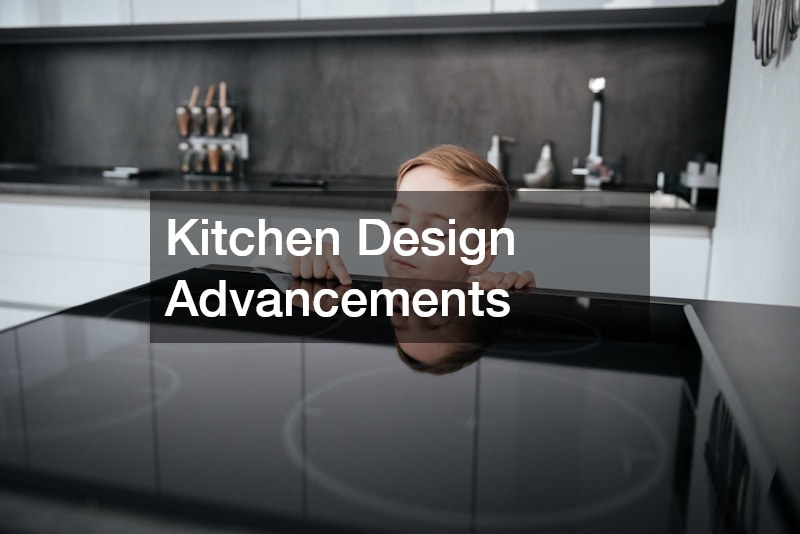
Kitchens have always been one of the most important rooms in the home, and their design continues to evolve with changing needs and tastes. In 2025, the kitchen will continue to be a focal point, emphasizing functionality, style, and innovation. Modern residential features include open-plan layouts, smart appliances, and multifunctional islands. Plumbing services play a critical role in ensuring that advanced kitchen designs include efficient and reliable water systems.
The integration of technology and sustainability in kitchen design is paramount. Smart refrigerators, induction cooktops, and energy-efficient dishwashers are reinventing the culinary environment, making it easier to prepare meals while conserving resources. These advancements are transforming kitchens into central hubs for family activities, blurring the line between traditional dining areas and living spaces.
Additionally, there is a renewed focus on the aesthetics of kitchen design, with countertops, cabinetry, and fixtures becoming central elements of style. The choice of materials such as quartz, recycled metals, and sustainably sourced timber aligns with contemporary tastes. The resulting kitchens are not only aesthetically appealing but also equipped to meet the demands of modern lifestyles, representing a significant advancement in residential features.
Using Color Innovatively in 2025
Color has always been a powerful tool in design, and its use continues to evolve, with 2025 trends emphasizing innovative applications. Residential elements that utilize bold and creative color schemes can dramatically transform spaces, adding energy and style. Interior electrostatic painting services offer opportunities to apply sleek and contemporary finishes, providing a unique touch to a home’s aesthetic.
Experimentation with colors extends beyond traditional paint choices to include colorful fixtures, appliances, and even furniture. By strategically utilizing color, homeowners can create visually stimulating environments that evoke emotions and enhance mood. Additionally, advances in paint technology have made it possible to achieve richer, longer-lasting colors with environmentally friendly products.
Using color innovatively in interior design allows for limitless creativity, empowering homeowners to personalize their domains beyond conventional boundaries. Whether it’s accentuating a feature wall or integrating subtle hues into a cohesive theme, innovative color usage in residential features is set to offer transformative effects, making homes more vibrant and expressive in 2025.
Ergonomic and Multifunctional Home Office Design
As remote work continues to be prevalent, the design of home office spaces has taken on greater importance. Ergonomic and multifunctional home office design focuses on creating comfortable, efficient environments that boost productivity. Residential features like convertible desks, ergonomic chairs, and soundproofing measures are essential in crafting spaces conducive to focused work. Collaborations with a local HVAC company ensure that these spaces are maintained at optimal comfort levels, regardless of season or use.
Advanced network setups, video conferencing capabilities, and cloud-based storage solutions facilitate seamless remote working experiences. By addressing both physical and technological needs, these residential elements make home offices as functional as traditional offices.
By 2025, home office design will likely see further innovation to accommodate evolving work patterns and technologies. As more homeowners balance personal and professional lives within the same space, the demand for tailored office environments will continue to grow. The result will be residences that offer dynamic, adaptable spaces able to support a diverse range of activities and needs.
Adaptable and Accessible Multi-Generational Living Spaces
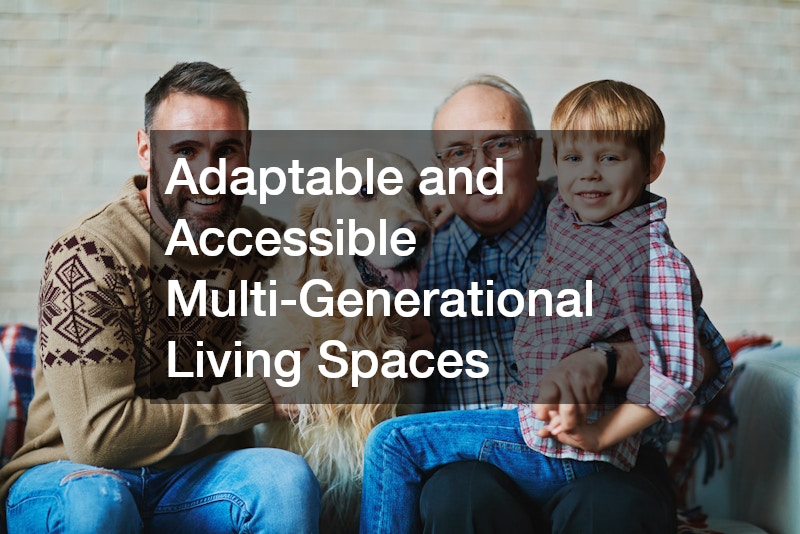
Today’s families are increasingly embracing multi-generational living arrangements. Adaptable and accessible spaces cater to the needs of both the young and old, creating homes that accommodate various generations under one roof. Residential features such as flexible floor plans, accessible entrances with the help of locksmith services, and age-friendly amenities ensure everyone feels comfortable and welcome.
Homes may feature secondary suites, accessible kitchens and bathrooms, and supportive technologies that enhance the independence of older residents. By carefully considering these elements, homeowners can create an environment where family members across generations can cohesively and comfortably coexist.
As societal norms continue to evolve, these accessible and adaptable designs will become more prevalent, reflecting the importance of inclusivity within residential spaces. By 2025, multi-generational living spaces will be an integral part of home design, highlighting the growing need for homes that accommodate a diverse range of occupants.
The residential features and design trends of 2025 present a myriad of possibilities for enhancing our living environments. Embracing sustainability, smart technology, and innovative design offers homeowners the opportunity to create spaces that are efficient, beautiful, and conducive to well-being. As we integrate these elements into our homes, the result is an innovative blend of comfort, style, and functionality that reflects the needs of modern living. By remaining attuned to these emerging trends, homeowners and builders can ensure their spaces remain relevant and valuable well into the future.
